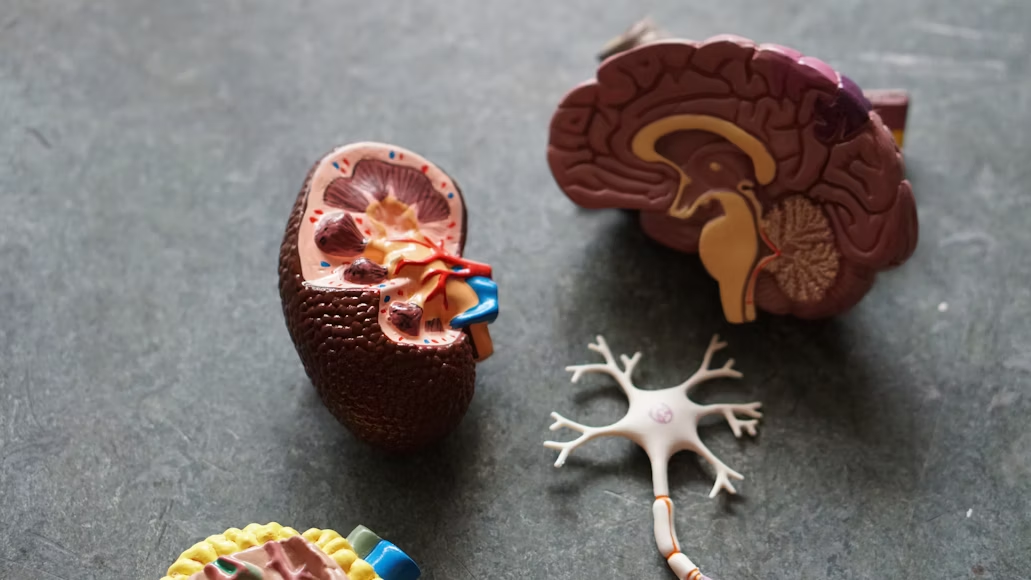A Simple Tool for Soothing Your Nervous System—Rooted in Rhythm
Stress is something we all experience, but it doesn't just "live in our head." It lives in our body, wired deep into our nervous system. From racing thoughts to tight shoulders, sweaty palms to shallow breaths, the stress response affects nearly every system we have.
But what if something as simple as listening to music could start to reverse it?
Science says it can—and the way it works is both deeply biological and profoundly emotional.
Before we explore how music interacts with stress, it helps to understand what the stress response actually is. Starting with our nervous systems.
When your brain perceives a threat—real or imagined—it activates the sympathetic nervous system (SNS), often known as the "fight-or-flight" response. This triggers a surge of chemicals like cortisol and adrenaline, which:
All of this is meant to prepare you to react quickly to danger. But the body doesn’t distinguish between a bear charging at you and your phone buzzing with a passive-aggressive email. As a result, many of us live in a state of chronic activation—where our stress systems never fully shut off.
And that’s where music can step in.
The opposite of the fight-or-flight system is the parasympathetic nervous system (PNS)—sometimes called the "rest and digest" system. This branch of the nervous system slows the heart, lowers blood pressure, and allows the body to return to a state of calm and repair.
So how do we activate it?
One proven way is through slow, rhythmic music. Research shows that listening to calming music—especially pieces with a tempo of 60–80 beats per minute—can encourage parasympathetic dominance. That means your body begins to shift out of panic mode and into a more regulated state.
Music doesn’t just “sound nice”—it sets off a cascade of neural activity.
Here’s what lights up:

When calming music plays, especially music that’s familiar and emotionally safe, it can downregulate overactive areas like the amygdala and enhance regions responsible for attention, emotion regulation, and memory integration.
In other words, music isn’t a distraction—it’s a biological intervention that has been shown in studies to even work with patients who are unresponsive.
One key reason music affects the stress response so directly is a phenomenon called entrainment. This is when the body’s internal rhythms—like heartbeat, breath rate, and brainwaves—start to synchronize with the external rhythm of sound.
Imagine you’re listening to a song with a slow, steady beat. Over time, your heart rate and breathing pattern can begin to match that tempo, bringing your body into a calmer, more coherent state. It’s almost like music becomes a metronome for your nervous system.
This is why many meditation tracks, spa playlists, and therapeutic soundscapes are intentionally structured around steady, soothing rhythms. It’s not just aesthetic—it’s neuroscience.

Stress often brings emotional overwhelm. Whether it’s fear, anger, sadness, or numbness, we can struggle to name or manage our internal world.
Music offers a bridge. Music therapy in particular helps with stress and emotions to an even greater degree.
Because it bypasses logical processing and speaks directly to the emotional centers of the brain, music can help you:
This is one reason why music therapy has shown such promise for people with PTSD, depression, and anxiety. Sometimes, sound can speak where speech falls short.
Not all music is relaxing, and what works for one person may not work for another. But here are some general guidelines:
Music in this tempo range mimics a resting heart rate and can help entrain your breathing and heartbeat.
Without lyrics, the brain can disengage from verbal processing and instead enter a more sensory, emotional state.
Consistency in rhythm and harmony provides a sense of safety and coherence, helping to calm an overactive nervous system.
Music connected to safety, nostalgia, or personal meaning can evoke positive emotion and comfort, even if it doesn’t check every “calming” box.
You don’t need a specific genre—just music that feels safe and regulating to you. Not all brains are the same and this applies to our emotional responses to music as well.

Here are some ways to intentionally incorporate music into your stress management routine:
Include songs that help you breathe more deeply, feel grounded, or slow down your thoughts. Listen during high-stress moments, or even better, before you feel overwhelmed.
Play energizing music in the morning to shake off grogginess, or calming music at night to help wind down from the day.
Inhale for 4 beats, exhale for 6, matching the rhythm of the track. This builds deeper entrainment and shifts your body into parasympathetic mode faster.
Making music, even imperfectly, gives your body an active role in regulation. Singing activates the vagus nerve, which helps calm the stress response.
Our ancestors used rhythm and song in rituals, healing ceremonies, and communal bonding long before the first neuroscience scan. They knew what research now confirms: music changes the body.
In a world that constantly stimulates and stresses our nervous systems, music offers a reset—a nonverbal way to come home to yourself.
So next time your heart is racing or your chest feels tight, try reaching for a song instead of a solution.
You might find that your brain—and your body—already know what to do.